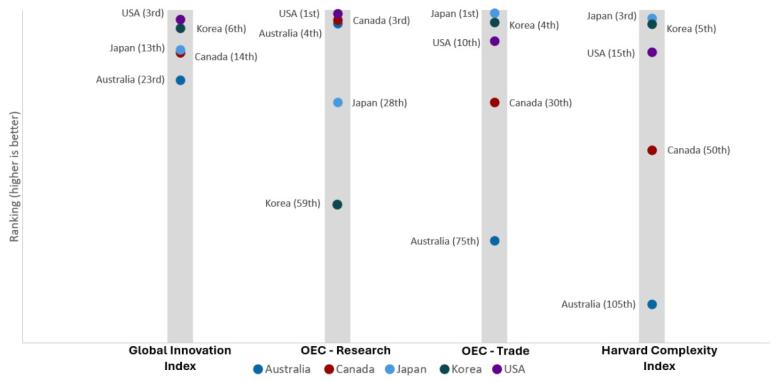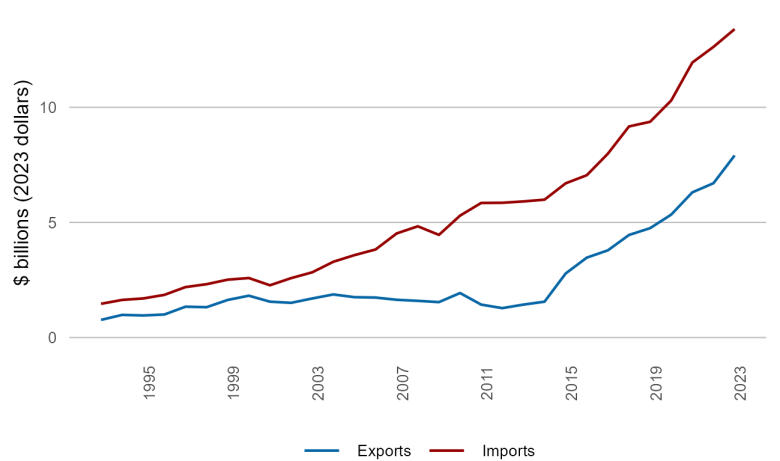However, Harvard’s Economic Complexity Index ranks Australia 105 out of 145 countries (Harvard University, 2025). Australia sits below all other G20 countries in this ranking. The Observatory for Economic Complexity’s Trade Index ranks Australia similarly (75 out of 132, again last of the G20).
These export and trade complexity indicators rank countries based on how many products the country exports, and how many other countries export the same products. These indicators are less able to capture the service sector and efficiency of goods production.
Australia’s service sector is a large part of our economy. However, commodities like iron ore, coal and natural gas account for a large share of our exports. Although we produce these commodities with sophisticated mining processes, they are not unique to Australia. Many of Australia’s niche, sophisticated exports are not captured in these indicators because of their low market share.
The Observatory for Economic Complexity’s Research Index ranks Australia 4 out of 123 countries, between Canada (3rd) and Japan (28th) (OEC, 2024). Like the other complexity indicators, this index considers the range and uniqueness of countries’ scientific publications. Although only assessing a small part of the innovation system, it highlights Australia’s strong research system.
The Australian Innovation Statistics help us unpack global indices
We can use a new metric that we have included in the Australian Innovation Statistics, Australia’s exports and imports of intellectual property, to better understand the global rankings.
This new metric captures charges for the use of intellectual property. This includes outcomes of R&D, licenses for software use and trademarks licensing fees. It shows that Australia is a net importer of intellectual property. The rapid increase in both imports and exports of intellectual property from 2014 reflects growing trade in licences to reproduce computer services, distribute them, or both. This trend is the result of both the growing role of digital technology in the economy and Australia’s strengths in adopting and developing innovative digital products.


